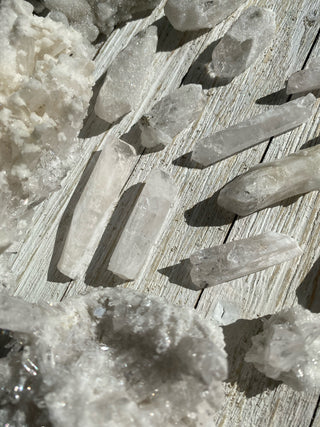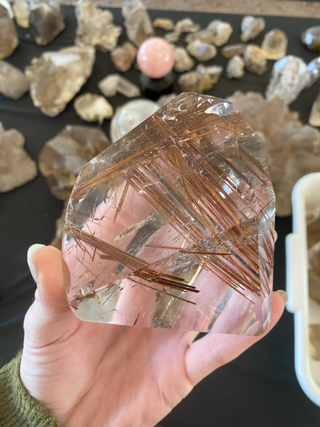What is Danburite?
Discovered in the mid-19th century in Danbury, Connecticut, Danburite is a calcium borosilicate mineral known for its prismatic crystals. Often found within metamorphic rocks and hydrothermal veins, Danburite crystals showcase exceptional transparency and a vitreous luster, traits that make high-quality specimens highly sought after with notable deposits in Mexico, Japan, Russia, and the United States.
The Geological Formation of Danburite
Danburite can be formed through two different geological processes. Danburite is commonly found in pegmatites associated with metamorphic rocks. These pegmatites are formed from the crystallization of magma that cools slowly underground, allowing for the growth of large crystals. Alternatively, Danburite can also be found in contact metamorphic environments where rocks are altered by the heat and pressure from nearby intrusions. In these settings, Danburite forms as a result of the metamorphism of pre-existing minerals due to the high temperatures and pressures.
Metaphysical Properties of Danburite
Danburite is considered to have high vibrational energy, that fosters connections to angelic realms and higher consciousness, making it a cherished stone among spiritual seekers. Danburite is celebrated for its ability to clear and activate the crown chakra, promoting clarity of thought, divine wisdom, and spiritual enlightenment. This crystal serves as a beacon of inner peace and a guiding light on the path to spiritual awakening.
Collecting Danburite
For mineral collectors and enthusiasts, Danburite offers a unique blend of aesthetic beauty and metaphysical significance. The clarity and luster of high-quality specimens make them prized additions to any collection, while the stone's spiritual associations add an additional layer of value and interest. Whether for its stunning appearance or its elevating energy, Danburite remains a gemstone of choice for those seeking both beauty and enlightenment.
Notable Locations and their Unique Properties
-
Madagascar:
Danburite specimens from Madagascar exhibit pale yellow to pinkish colors with excellent transparency and gem-quality characteristics. They have a vitreous (glassy) luster when polished. -
Tanzania:
Tanzanian danburite comes in colorless, pale yellow, and pink hues, displaying transparency ranging from transparent to translucent and shows birefringence properties. -
Myanmar:
Danburite specimens from Myanmar showcase various colors such as colorless, pale yellow, and pink, with transparency levels ranging from transparent to translucent. -
Vietnam:
Vietnamese danburite is characterized by honey yellow coloration with some contaminated cracks, maintaining transparency with occasional color zoning. -
Mexico:
Mexican danburite specimens from Charcas, San Luis Potosí are often colorless or pale yellow crystals associated with Calcite, Fluorite, Apophyllite, Stilbite, Chalcopyrite, Sphalerite, and Citrine. They are fairly devoid of Rare Earth Elements but are enriched in Strontium and Aluminum. -
Russia:
Russian danburite crystals can be pale pink to pinkish-brown in coloration, showcasing unique hues compared to other locations


